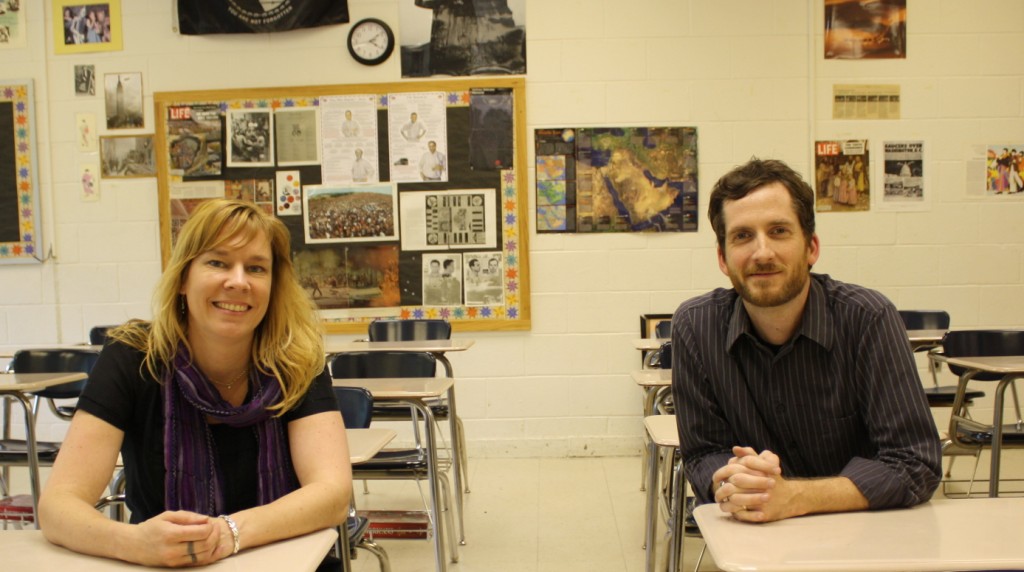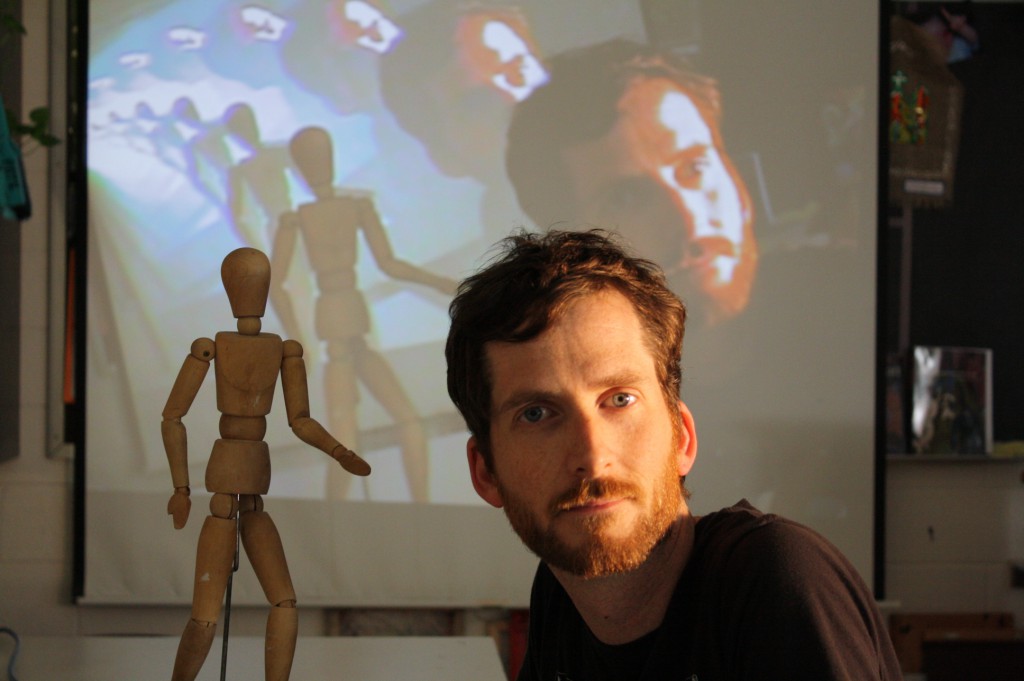This week, we continue our introductions to each of the eight pairs of educators who were chosen to participate in the third year of Art21 Educators. Last week we met Maureen Hergott and Julia CopperSmith from Chicago, IL. Now we are excited to introduce Jack Watson and Holly Loranger.
Jack Watson and Holly Loranger hail from Chapel Hill, North Carolina. Jack has been teaching for six years. He currently teaches Art History and 2D Visual Art classes at Chapel Hill High School with Holly, a Social Studies teacher whose classes include Arts Focus US History and Comparative Religions. Jack admires his partner’s ability to engage students in critical thinking and says, “There are times when my students come into my classroom continuing a conversation about religion or culture that they started in her class, sometimes days earlier.” Holly is excited to work with Jack in a formal collaborative setting. She describes her experiences working with her partner, remarking that, “he is an incredibly innovative and inspirational colleague.”
In his video profile, Jack tells us about his family, city, and students, and he introduces himself as an artist, musician, and top-five list-maker. (Note: while we were impressed with Jack’s album selections, our musical taste had no influence in our decision.)
Jack learned about Art21 Educators last spring, when he and several of his students went to a TASK Party hosted by Art21 artist Oliver Herring at the University of North Carolina. Herring later visited Jack’s classroom and recommended that he apply to the program. As part of his application, we asked Jack to describe a specific work of art, artist, or exhibition that recently inspired him and/or his teaching practice:
I saw Mark Bradford’s solo show at the Wexner Art Center last summer and was inspired by the way he reclaimed the castaway detritus of his neighborhood — old signs and posters, record covers, permanent-wave end papers, etc. — and the way he layers them in dense and complex abstract compositions. The surface beauty of his work seduced me, but when I watched his Art21 segment, I became interested in the idea of palimpsest and trace memory and how layered images can create a juxtaposition of ideas.
When I returned to school that fall, I planned a project for my advanced students called Paradox Drawings. Students were asked to select a paradoxical idea and investigate it in a mixed media work that utilized paradoxical processes: concealing and revealing, traditional and non-traditional mark making, found surfaces and prepared surfaces . . . Students responded well to Bradford’s work . . . and matched my enthusiasm for both the concept and the visual experiment.
Jack also described the challenges he faces when teaching with contemporary art:
I have been teaching with big ideas and contemporary practices for a few years now, and while I feel the successes have been tremendously rewarding both personally and professionally, they come amidst periods of great frustration and futility. Asking students to conceptualize their art making process and to use contemporary artist references sometimes feels like asking them to use advanced calculus. They’ve never done it, they’re challenged by it, and that uncertainty brings with it failures, dead-ends, and occasional push-back. There have been times where I think it would be much easier to teach a more traditional curriculum, but I believe in a contemporary curriculum, and I want to see it thrive.
Jack’s partner, Holly, aspires “to grow as a holistic educator.” Holly has taught for ten years at Chapel Hill High School, and helped to implement the school’s Arts Academy program, through which students can take English, History, Science, and Math courses with an Arts Focus. Holly says, “As a Social Studies teacher, I believe one of my primary tasks is to help my students better understand how the world has been shaped by a multitude of forces and that they are also agents in shaping it.”
Holly introduces an “Artist of the Week” to her History students as part of her curriculum, and explains why she uses contemporary art in her classroom:
I use contemporary art as a way to introduce new ideas and global trends that might not be readily accessible to my students. Contemporary art links these concepts to the human artist and the message they are trying to communicate. It proves a springboard for deeper discussions about the stories behind the creations . . . I try to bring the world into my classroom. Contemporary art allows me to do that in ways that are relevant, meaningful, and compelling.
In her video biography, Holly gave us a glimpse into the diverse films, music, artwork, and literature that she incorporates in her coursework:
Holly was also awarded a fellowship from the U.S. State Department to travel to Amman, Jordan, in the Spring of 2012, which includes conducting professional development for teachers who work at a school for teenage girls. It will be interesting to learn more about the fellowship and understand how instructional strategies and ways of teaching contemporary art within a humanities classroom change in this international context.
We are excited to welcome Jack and Holly to Art21 Educators!







Pingback: Art21 Educators 2011-2012: Jethro Gillespie and James Rees | Art21 Blog
Pingback: Systems & Instructions | ART21 Magazine